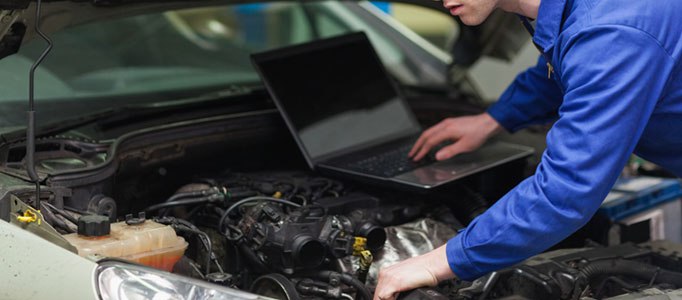Every year, car owners will go through that nervous wait as their car has its MOT test. Like an expectant father waiting outside the maternity ward, you can feel powerless, all you can do is hope that everything will be alright. Failing an MOT can also be expensive, adding more stress to the situation. But what exactly gets tested during an MOT? Here’s a breakdown so you can better monitor your car between tests.
View the infographic: Click here for a nice visual guide to what gets tested.
The MOT test
First introduced in 1960, the MOT was only carried out on cars over 10 years old and every year after that, inspecting important features like steering, braking and lights. Due to the large percentage of cars failing the test, the testing age was reduced to 7 years in 1961, reducing to 3 years in 1967 which remains in place for cars to this day.
The test has changed across the years to add more requirements, making the test more thorough than ever before. In order to reduce fraud, all MOT tests since 2008 are now logged online, meaning that a car can no longer be issued with a test without the thorough examination required. Members of the public can check if their car has been tested or the date of expiration of their current MOT at the department of transport website.
What is tested?
The Ministry of Transport test, or MOT, looks at several areas on the car to ensure the vehicle is legal and roadworthy. In addition to ensuring that the car is safe to be on the roads, the test also looks at the vehicle identification markings and also the exhaust emissions. Below is a brief overview of what parts of the car are tested during an MOT. If your car is due an MOT, you may want to consider having any known faults to these areas repaired to increase the car’s chances of passing the MOT.
Identification
Vehicle Identification Number: This must be permanently displayed on the vehicle and easily readable.
Number plate: The vehicle registration plate must be clear and readable, as well as securely fixed to the vehicle.
Visibility
Lights: All the lights should be working correctly and of the right colour (brakes are red, indicators are orange, reversing lights are bright white). The controls on the dashboard should also be working correctly.
Windscreen: The windscreen is clear and does not obstruct or distort the driver’s view of the road.
Windscreen wipers and washers: Tested to ensure that both are working correctly to clean the windscreen to maintain a clear view of the road.
Mirrors: The mirrors are all in the correct position and provide a clean and clear view. They are also correctly fitted and are in no danger of becoming loose.
Safety
Seats: The front driver and passenger seat are secure and can lock safely in position. The rear seats are secure and can remain locked in the upright position.
Seatbelts: The seatbelts are the correct type for each seat, lock securely into place, and are in good condition.
Horn: The car horn works correctly, is easy to operate, and is the correct tone and sound for the type of vehicle.
Brakes: The brakes will be tested on a roller brake tester when applicable. Condition of the brake pads will be examined to ensure that they are working correctly. Performance will also be assessed to ensure the brakes are working to standards.
Brake pedal: The pedal should be non-slippery.
Steering: The steering should be responsive and to standard.
Suspension: Should be in good working condition.
Fuel and Exhaust systems
Fuel: The fuel cap can be unfastened and then fastened securely. There should also be no leaks within the fuel system.
Emissions: The emissions from the car will be checked to see if they are in line with the car’s age and fuel type.
Exhaust: The exhaust must be securely fitted, no serious leaks, and the system must be intact and complete. The noise should also be effectively silenced.
Wheels and car body
Tyres: Each of the four tyres should be roadworthy, with a tread depth within the legal guidelines. If applicable, the correct type of tyres should also be fitted.
Wheels: The wheels should be safely secure on the car, with the fittings in good condition.
Body: The exterior of the car’s body should be in a safe condition, with no sharp edges. There should not be any excessive corrosion to the body.
Doors: The doors should be in good condition, with the front doors able to be opened from inside or outside of the car. They should close and lock properly into the secure driving position.
What if my car fails the MOT test?
If a car fails its MOT test, then there are a number of options available to you. If you leave the car at the test centre for repair and retest before the end of 10 working days, then there is no fee. This is because this is classified as a “partial retest”.
If you take the car away from the test centre for repair, then there is no fee for a retest if the car is returned within 1 working day of the initial test. This is only applicable when repairing certain minor faults. For a full list of which repairs qualify, visit the direct.gov website.
If you remove the car from the test centre for more than 1 working day and less than 10 working days, then you will undertake a partial retest and may incur a partial retest fee.
More driving tips from Creditplus:
Is your car suitable for a new baby? Important questions to ask.





 Facebook
Facebook Twitter
Twitter Instagram
Instagram LinkedIn
LinkedIn Youtube
Youtube